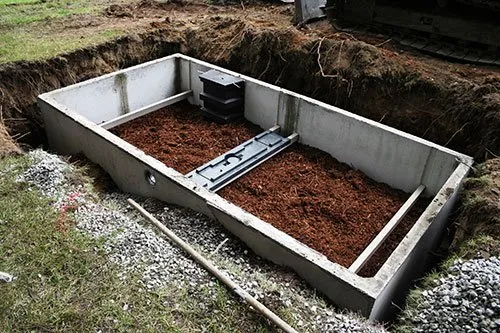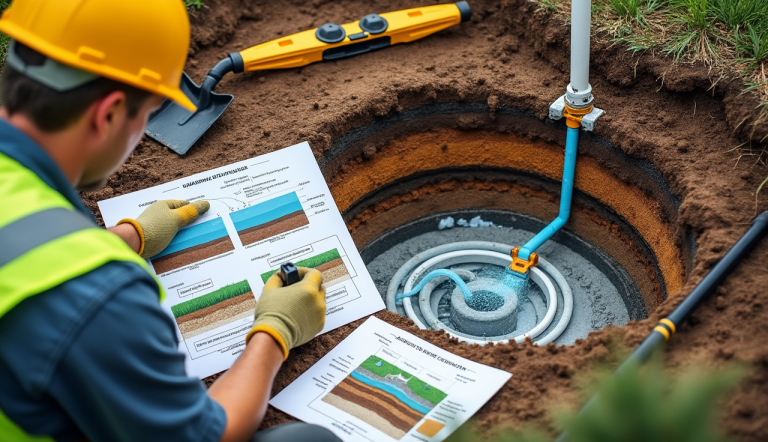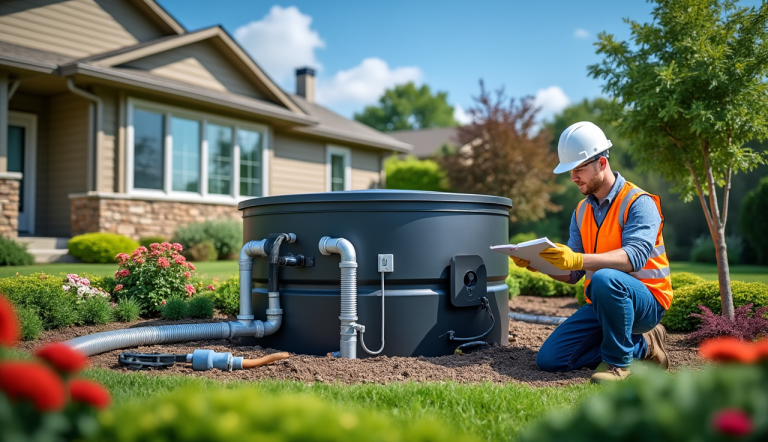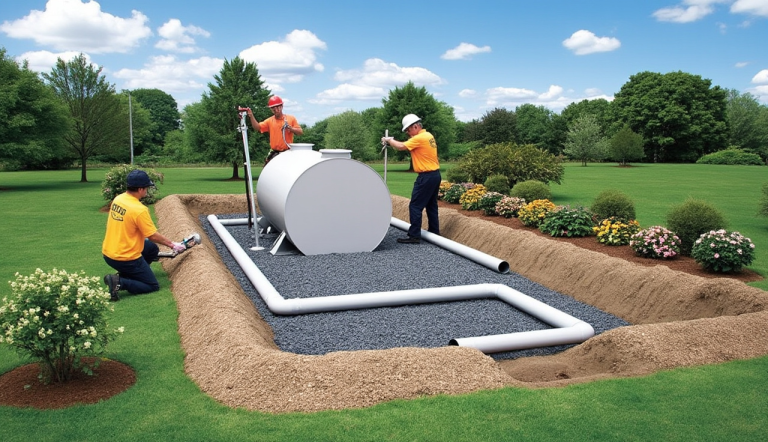How Jet Septic Systems Work: Middletown’s Solution
Jet septic systems are advanced wastewater treatment solutions that use aeration to break down waste more efficiently than traditional septic tanks. These systems incorporate a unique process that injects air into the wastewater, promoting bacterial growth and accelerating the breakdown of solid waste and contaminants.
Table of Contents
Key Takeaways
- Jet septic systems use aeration to treat wastewater more effectively than conventional septic tanks
- The aeration process promotes bacterial growth, speeding up waste breakdown
- The three-compartment design allows for the thorough treatment of wastewater
- Reduced environmental impact due to cleaner effluent discharge
- Lower maintenance requirements compared to traditional septic systems
- Ideal for homes in Middletown, NY, and surrounding areas with limited space or poor soil conditions
How Jet Septic Systems Work Basics
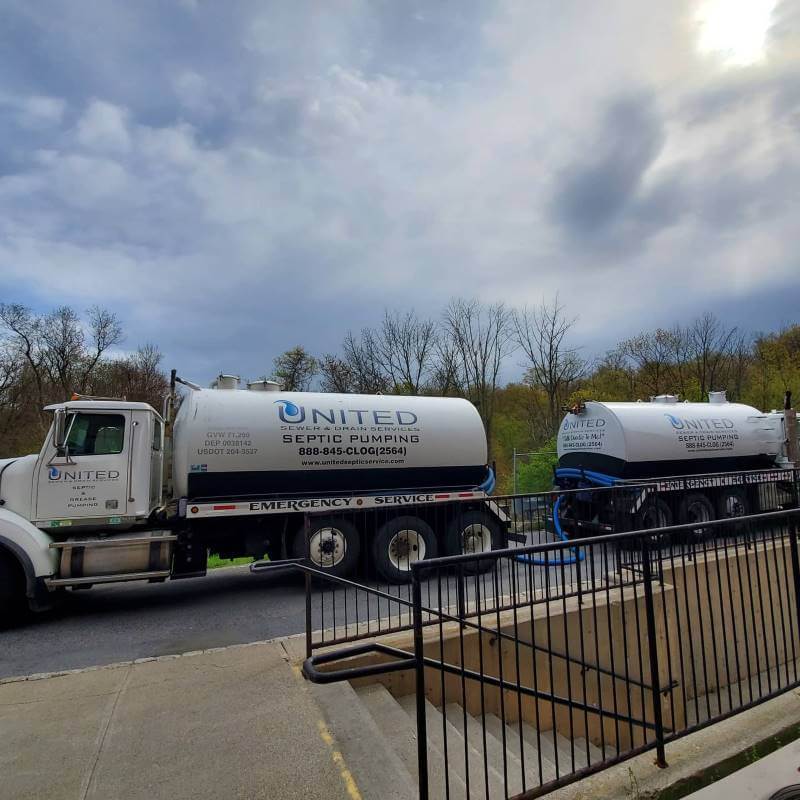
How jet septic systems work is a game-changer for homeowners in Middletown, NY, and the surrounding Hudson Valley region. These systems offer a modern approach to waste management, addressing many of the challenges faced by traditional septic systems in our area.
Unlike conventional septic tanks that rely solely on anaerobic bacteria to break down waste, jet systems introduce oxygen into the treatment process. This aerobic environment supercharges the bacterial activity, resulting in faster and more complete waste decomposition.
The jet system’s design typically consists of three main compartments: the pretreatment chamber, the aeration chamber, and the clarification chamber. Each plays a crucial role in the wastewater treatment process, ensuring that the final effluent is much cleaner than what you’d get from a standard septic tank.
The Pretreatment Stage
The journey of wastewater through a jet septic system begins in the pretreatment chamber. This initial stage is critical for the overall efficiency of the system and helps extend its lifespan.
As wastewater enters the pretreatment chamber, it undergoes a process similar to what happens in a traditional septic tank. Solid waste settles to the bottom, forming a layer of sludge, while oils and greases float to the top, creating a scum layer.
The pretreatment chamber serves as a buffer, preventing large solids and non-biodegradable materials from entering the aeration chamber. This is particularly important for homes in Middletown that might have older plumbing systems prone to introducing debris into the wastewater stream.
By removing these larger particles upfront, the pretreatment stage reduces the workload on the subsequent chambers and helps prevent clogs or damage to the system’s components.
The Heart of the System: The Aeration Chamber
The aeration chamber is where the magic happens in a jet septic system. This is the stage that sets jet systems apart from traditional septic tanks and makes them so effective at treating wastewater.
In the aeration chamber, an aerator pump introduces air into the wastewater. This constant supply of oxygen creates an ideal environment for aerobic bacteria to thrive. These bacteria are much more efficient at breaking down waste than their anaerobic counterparts found in conventional septic tanks.
The aeration process not only speeds up waste decomposition but also helps to reduce odors. This is a significant benefit for homeowners in Middletown’s more densely populated neighborhoods, where septic odors can be a nuisance.
The turbulence created by the aeration process also helps to keep solids suspended in the water, preventing them from settling and forming a sludge layer. This suspension allows for more complete treatment of the wastewater.
The Final Touch: The Clarification Chamber
After the intensive treatment in the aeration chamber, the wastewater moves into the clarification chamber. This final stage is crucial for producing high-quality effluent that’s safe for discharge into the environment.
In the clarification chamber, the treated water is allowed to settle. Any remaining solid particles sink to the bottom, forming a small layer of sludge. Meanwhile, the clear, treated water rises to the top.
The design of the clarification chamber often includes baffles or other structures that prevent the discharge of any floating materials. This ensures that only the cleanest water exits the system.
For Middletown residents living near sensitive water bodies like the Wallkill River or Monhagen Lake, the high-quality effluent produced by jet septic systems is a significant environmental benefit.
The Advantages of Jet Septic Systems
How jet septic systems work offers several advantages that make them an attractive option for homeowners in Middletown and the surrounding Orange County area.
One of the primary benefits is the system’s ability to function effectively in areas with poor soil conditions. Many parts of Middletown have clay-rich soils that don’t percolate well, making traditional septic systems less effective. Jet systems, with their superior treatment process, can overcome these soil limitations.
Another advantage is the system’s compact size. For homeowners in Middletown’s more urban areas or on smaller lots, a jet system can provide effective wastewater treatment without requiring a large drain field.
Jet systems also tend to have a longer lifespan than traditional septic tanks when properly maintained. This can translate to significant cost savings over time for Middletown homeowners.
Maintenance Requirements for Jet Septic Systems
While jet septic systems are generally low-maintenance, they do require some regular care to ensure optimal performance. Here’s a breakdown of typical maintenance tasks:
- Regular inspections (annually or as recommended by the manufacturer)
- Pump-outs every 3-5 years, depending on usage
- Checking and cleaning the aerator
- Monitoring the control panel for any warning signals
For Middletown residents, it’s important to work with a local septic service provider familiar with jet systems. They can provide tailored maintenance schedules based on your specific system and usage patterns.
Environmental Impact of How Jet Septic Systems Work
How jet septic systems work has a significantly lower environmental impact compared to traditional septic tanks. This is particularly relevant for Middletown, given its proximity to important water resources.
The high-quality effluent produced by jet systems contains fewer nutrients and pathogens than the output of conventional septic tanks. This reduces the risk of groundwater contamination and helps protect local water bodies.
Additionally, the efficient waste treatment process of jet systems results in less methane production, a potent greenhouse gas. This aligns well with New York State’s ambitious climate goals and can be a selling point for environmentally conscious homeowners in Middletown.
Cost Considerations for Middletown Homeowners
While How jet septic systems work offers numerous benefits, Middletown homeowners need to consider the cost implications. Here’s a breakdown of potential costs:
| Cost Category | Estimated Range |
|---|---|
| Initial Installation | $10,000 – $20,000 |
| Annual Maintenance | $200 – $500 |
| Electricity Costs | $200 – $300 per year |
It’s worth noting that while the initial cost may be higher than a traditional septic tank, the long-term benefits and reduced environmental impact can make jet systems a worthwhile investment for many Middletown homes.
Comparing Jet Systems to Other Septic Solutions
To provide context for Middletown homeowners considering their septic options, let’s compare jet systems to other common solutions:
| Feature | Jet System | Traditional Septic Tank | Aerobic Treatment Unit |
|---|---|---|---|
| Treatment Efficiency | High | Moderate | High |
| Space Required | Moderate | Large | Moderate |
| Maintenance Needs | Low-Moderate | Low | Moderate-High |
| Effluent Quality | Excellent | Fair | Good-Excellent |
| Odor Control | Excellent | Fair | Good |
| Cost | Moderate-High | Low-Moderate | High |
Regulatory Considerations in Middletown, NY
Before installing a jet septic system in Middletown, homeowners need to be aware of local regulations and permit requirements. The Orange County Department of Health oversees septic system installations and has specific guidelines for alternative systems like jet septics.
Middletown homeowners should consult with local authorities and licensed septic professionals to ensure their jet system installation complies with all relevant regulations. This includes proper sizing based on household size and water usage, as well as meeting setback requirements from property lines and water sources.
The Installation Process of a Jet Septic System
Installing a jet septic system in Middletown typically involves the following steps:
- Site evaluation and soil testing
- System design and permitting
- Excavation and tank placement
- Installation of electrical components
- Connection to the home’s plumbing
- Installation of the drain field or other dispersal system
- Final inspection and approval
The entire process usually takes several days to a week, depending on site conditions and local permitting processes. Middletown homeowners should be prepared for some disruption to their property during installation.
Troubleshooting Common Issues
While How Jet Septic Systems Work is generally reliable, Middletown homeowners may occasionally encounter issues. Here are some common problems and their potential causes:
- Unusual odors: Could indicate a problem with the aeration system
- Wet spots in the yard: Might suggest a clogged or failing drain field
- Slow drains or backups: This could be a sign of system overload or blockage
- Alarm activation: Indicates a problem that requires professional attention
If you experience any of these issues, it’s important to contact a qualified septic professional in the Middletown area promptly. Addressing problems early can prevent more serious and costly repairs down the line.
Adapting to Middletown’s Climate
Middletown’s climate, with its cold winters and occasional heavy rains, can present challenges for septic systems. How Jet Septic Systems Work are well-suited to handle these conditions, but homeowners should take some precautions:
- Ensure proper insulation of above-ground components to prevent freezing
- Be mindful of water usage during heavy rain events to avoid overloading the system
- Consider installing a high-water alarm to alert you to potential issues during wet periods
By taking these steps, Middletown homeowners can ensure their jet septic systems perform optimally year-round.
The Future of Wastewater Treatment in Middletown
As Middletown continues to grow and develop, the demand for efficient and environmentally friendly wastewater treatment solutions is likely to increase. How Jet Septic Systems Work is well-positioned to meet this need.
Looking ahead, we may see further advancements in jet system technology, such as improved energy efficiency or integration with smart home systems for better monitoring and management.
For Middletown homeowners, investing in How Jet Septic Systems Work today not only solves current wastewater treatment needs but also prepares them for the future of residential waste management.
A Smart Choice for Middletown Homes
How Jet Septic Systems Work offers a modern, efficient, and environmentally friendly solution for wastewater treatment in Middletown homes. While they require a higher initial investment than traditional septic tanks, the benefits in terms of performance, longevity, and environmental impact make them a smart choice for many homeowners in our area.
As with any major home improvement, it’s essential to do your research, consult with local experts, and consider your specific needs and property conditions. With proper installation and maintenance, a jet septic system can provide reliable, effective wastewater treatment for your Middletown home for many years to come.
How jet septic systems work for efficient wastewater treatment. Learn about aeration, maintenance, and benefits for Middletown homes and the environment. For more information, you can visit our website or contact us.

